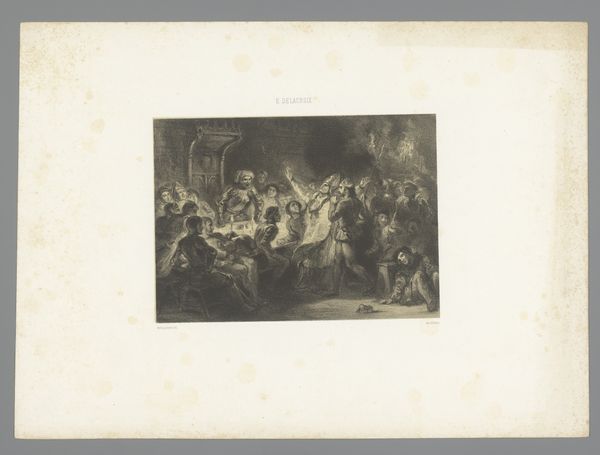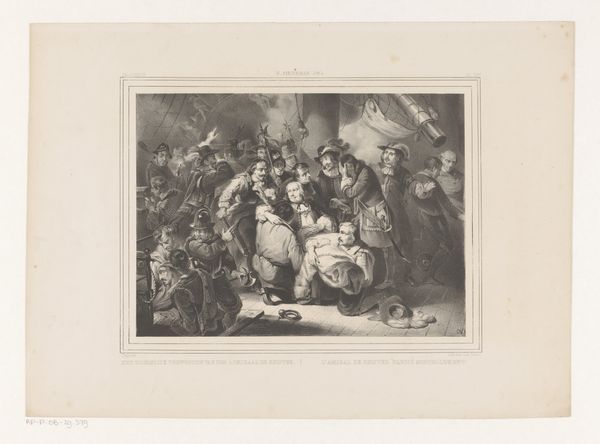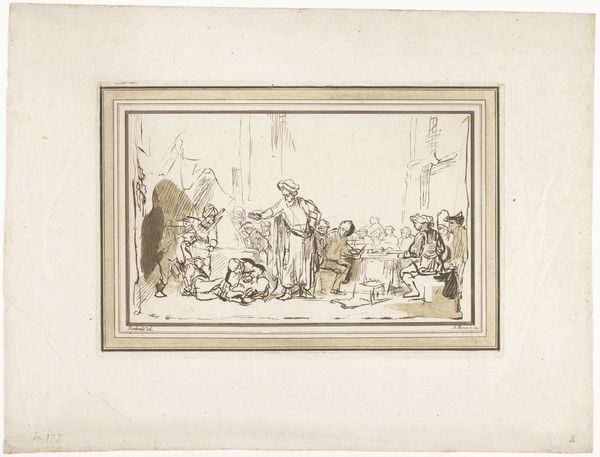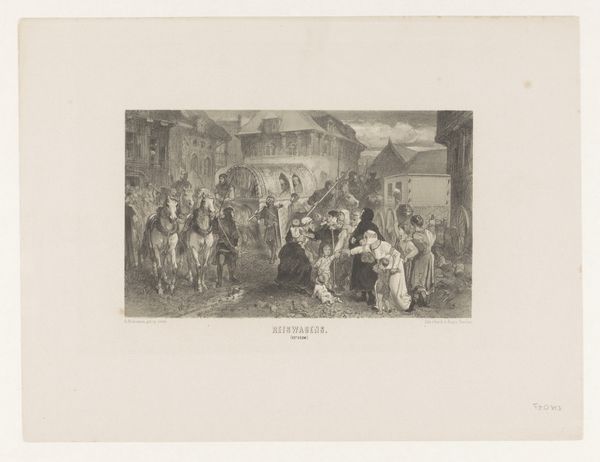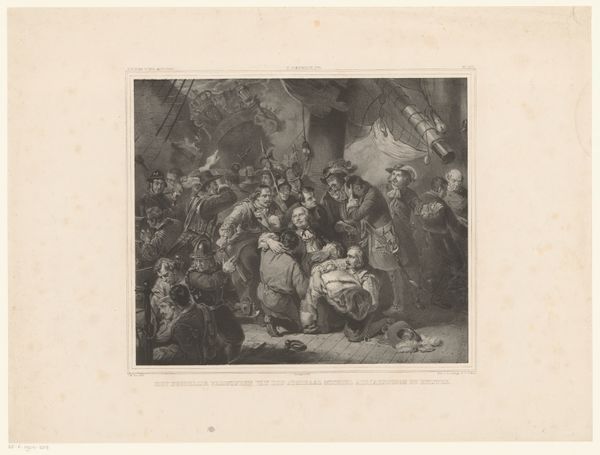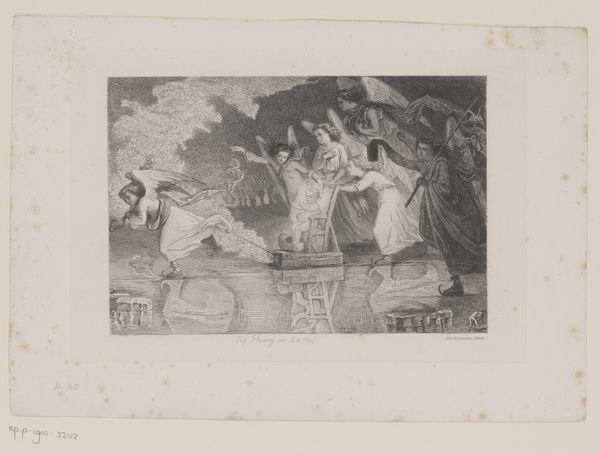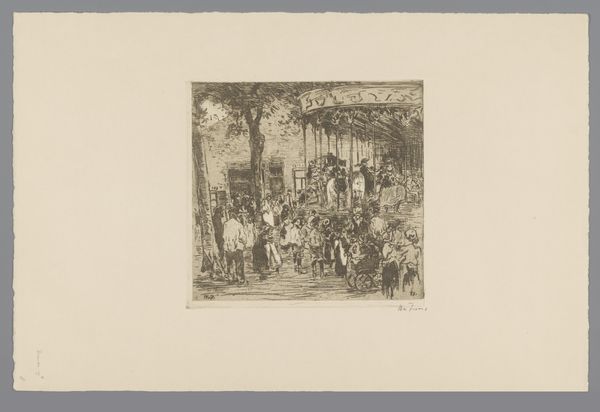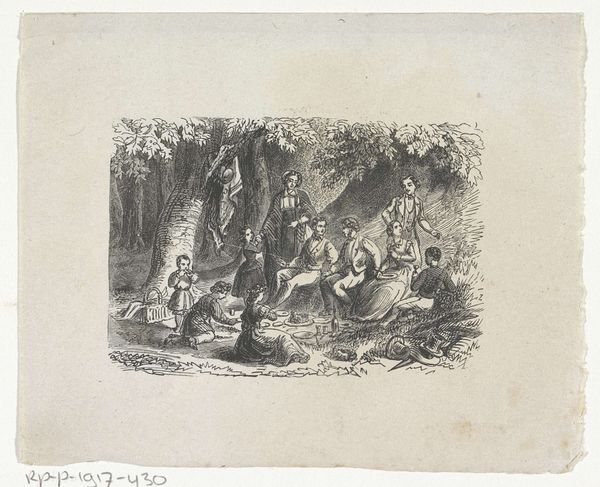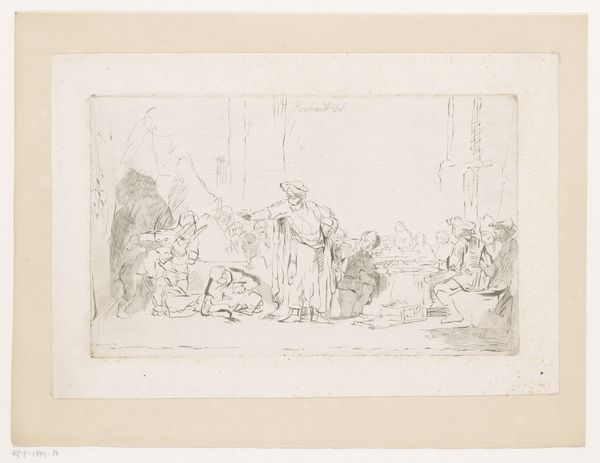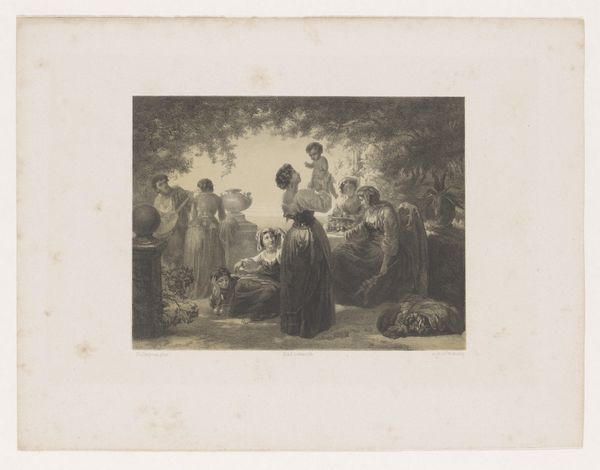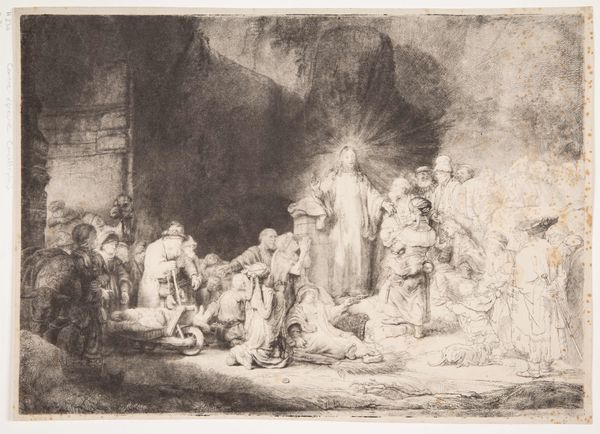
#
photo of handprinted image
#
pale palette
#
wedding photograph
#
pale colours
#
photo restoration
#
ink paper printed
#
wedding photography
#
light coloured
#
old engraving style
#
natural palette
Dimensions: height 208 mm, width 265 mm
Copyright: Rijks Museum: Open Domain
Editor: Here we have Jacques Philippe Le Bas's engraving after Rembrandt's "Christ Preaching," created in 1776. It's a very dense composition. The tonal range feels restricted, creating an almost claustrophobic atmosphere, wouldn’t you agree? What draws your eye within the image, and what visual relationships do you find particularly compelling? Curator: Note the deployment of chiaroscuro, or the manipulation of light and shadow, to direct the viewer's gaze. Observe how light defines the figure of Christ and models the faces in the crowd. The density you mentioned forces the viewer to contend with light and dark, which create the spatial dynamic. Can you perceive how the artist guides us to the main subject, the figure of Christ? Editor: The contrast is quite stark. I see how the lightest tones surround Christ, acting almost as a spotlight. But what of the etched lines themselves? Does the quality of the line contribute to the emotional weight? Curator: The etched line is pivotal. Examine its varied application. In the foreground figures, we observe dense, cross-hatched lines, building form through value, giving them weight. Notice how those lines seem to dissolve as we move up to Christ's face. This modulation speaks directly to the function of line as a generator of form. Also, there's the expressive potential in line as line. Observe how the artist conveys different textures with just etched line variations. Do you notice these visual strategies, and how do you feel this serves the print's thematic concerns? Editor: It does create a textural contrast. I appreciate seeing how light, shadow and the lines themselves define form. So the key is the formal components. Thank you! Curator: Indeed. Through formal analysis, one begins to unravel the essence and intentionality behind its creation.
Comments
No comments
Be the first to comment and join the conversation on the ultimate creative platform.
